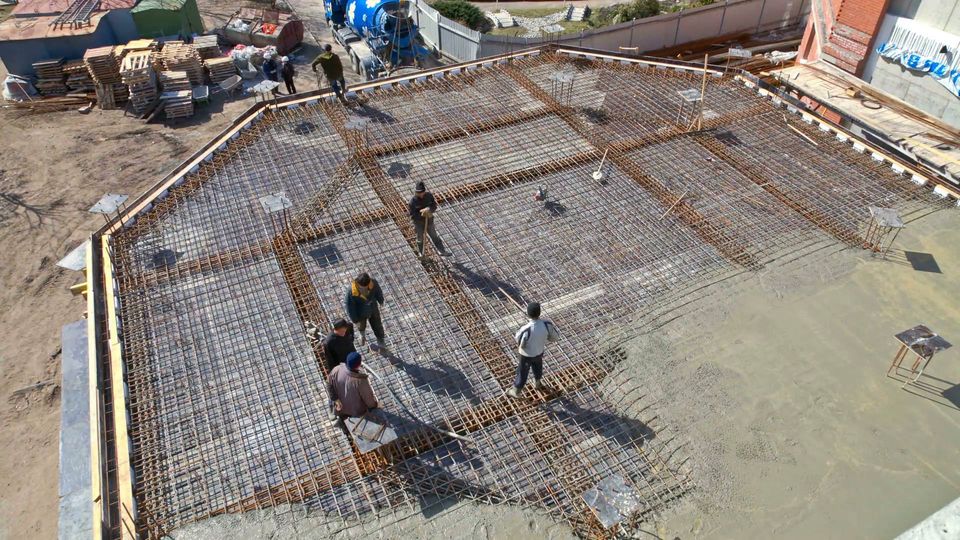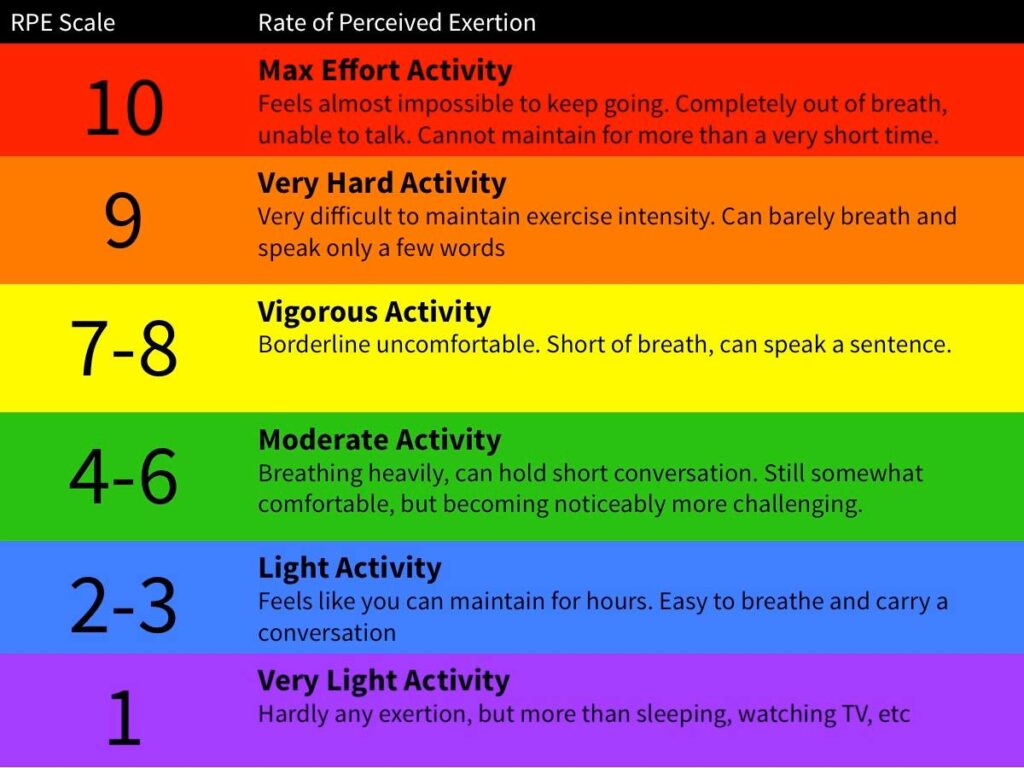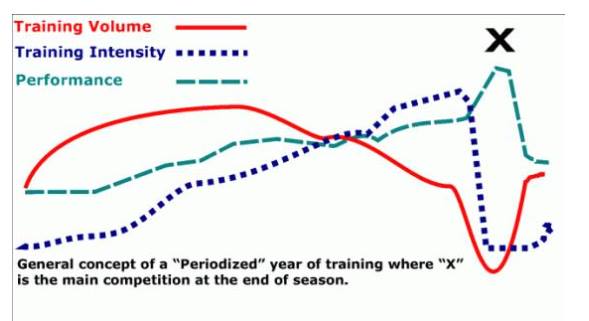We typically share information with our athletes by posting to the Facebook training group, however not everyone uses Facebook so I have included some of the useful posts here.
Training Foundation and Fundamentals and making your plan work for you
We want to ensure you are using your programme as best you can to set yourself up for future improvement and potentially greater volume.
Thinking of your fitness with the analogy of building a house.
Ensure you are building the foundations WIDE enough to build the biggest possible house.
To maximise your fitness we need to maximise the size of the house being built. Pour a massive foundation and set yourself up to build a massive house.
Build WIDE first, THEN up.
To build width we must train MORE OFTEN not just more.
Frequency > Volume
You will get more training stimulus, adaptation and improvement by training 5 or 6 times a week than you would training for longer but only 4 times a week.
In terms of athletic development, 4 hours of training across 2-3 runs in two days is going to serve you better than 4 hours of training in a single run.
Frequency is the concrete pad for the house. Build it wide with consistently running as often as possible. This is why the top athletes will train twice a day, 7 runs per week when they can.
Your runs need not be huge distance runs. 30 minutes is great! Two 15 minute runs will count too.
After some months of consistently running as often as you can, look to increase the volume/distance of some of those runs. Once the foundation is wide, consider building the walls upwards.
When you’re ready for more walls let us know and we can adjust your program accordingly.

Training volume and the Squadrun level system.
One of the scalable variants we include in our programmes is distance (or sometimes time). We write a skeleton plan for you and your target race and the clever SQUADRUN systems establish your training intensities and certain variables such as the length/duration of your long runs, the number of reps you do in a session etc to loosely arrive at your total weekly training load.
The vast majority of your plans should have the suffix “L1, L2, L3, or L4”. We call these ‘levels’.
NB – Exception being ‘L5’ 100 mile plans which are different again as they don’t scale in the same way.
There are TWO ways you can steer your training volume.
1) The smaller of these two we leave to you and that is simply how many runs you do per week which is dictated by your schedule and how you feel, general fatigue and response to training stimulus.

2) The bigger of the two is the LEVEL of your plan. This takes a broader shift in volumes up (or down) and only Ali or I can make this change for you. If you are on an L2 plan and feel as though you are ready for a step up, we can look to move you up to an L3 plan. Or visa versa, you are struggling with the distance of your long runs or the number of reps in a session, we can level you down for a bit.
In the interests of not burying newcomers, Ali and I generally err toward starting you on a lower level plan with the hope that once you settle into a rhythm of training we can apply higher loads later in a training phase.
Note that L4 is typically reserved for long course ultra distances such as Tarawera 100 etc. I would consider L4 too much mileage for most road marathons however some may want this volume en route to something bigger further afield.
Training intensities,
The speed at which you train is based on your fitness and determined by us using what we call ‘equivalent fitness calculations’. Several factors change this but none more so than your benchmark 5km time. Any sizable change in your 5km time, UP or DOWN should be updated in your profile online. You can update this however we need to verify it and re-run your numbers before your programme is updated. Since this is a manual step and requires a bit of work by Ali and I – please don’t play with it, it’s not a toy ![]()
My final comment would be that MORE IS NOT NECESSARILY MORE. If you already have a solid aerobic base there would diminishing returns from chasing 100km weeks on longer plans when you would probably force greater adaptation with less volume and harder sessions.
Determining training load
Athlete self-assessment and the importance of knowing yourself.
Each night as you lay in bed ask yourself – “How do my legs feel and how much physical stress have I applied with today’s run?”
Each day as you wake up ask yourself – “How have I recovered from yesterday’s stress and how ready am I for more stress and of what magnitude?”
Ali and I give you a programme to follow that largly applies stress in a macro sense. It includes many things including what you should be doing in this phase of your training but following it blindly without appreciating how much more or less you can/should take this day and the next may not be optimal for your improvement as athletes.
We control the macro, you control the micro.
If athletic development is your objective, if improvement is what you seek, you should be carefully adding some new stress most days. If you want to get ‘better’ you have to FEEL your way forward with a daily self-assessment.
The trick is to make minor adjustments to your day-to-day training to ensure you’re adding a sustainable and repeatable amount of overload stress to elicit adaptation. If the next planned run is a P6 progression run but you need 30min easy jogging, apply some commonsense and choose the bout of stress that is right for this moment in time.
Sometimes you’ll need to add a little more, sometimes you’ll need to take a little off.
OFTEN, there is capacity to tweak things a little to arrive at a ‘half-level’ between the programme ‘level’ (L1, L2, L3, L4…)
Always follow the programme but apply it to yourself intelligently.
A good rough measure is to compare this weeks total volume to an average of the weekly volume over the last 6 weeks ensuring that this weeks volume somewhat resembles that average or possibly trends upwards SLIGHTLY.
The path forward is to continually absorb small bouts of stress most days over a long time.
You know you better than we do but if you need guideline in the macro sense, get in touch.

Why Speedwork – Lactate for Ultra-runners
I’m never going to run a 4min/km in my race so why should I do one in training?
Good question. There are a lot of acceptable answers but here I’m just going to focus on one of them. We’ll park, muscle development, neuromuscular recruitment, gene activation (it’s complicated), psychological conditioning and many more. Let’s focus just on LACTATE.
To create energy your cells burn oxygen with fatty acids and glycogen. Using primarily these three ingredients we say you are running aerobically. It is important to note that you are also creating and clearing blood lactate for energy. Working aerobically, you are clearing lactate faster than you are accumulating it. This is an important point to consider: your cells are using lactate even when you’re jogging.
For a point of perspective, we’re going to call this aerobic state your LOUNGE. Your lounge is large and filled with air. It’s the biggest room in the house.
As your energy demand increases your reliance on lactate increases and at some stage you begin to accumulate more lactate than you can clear. It’s NOT a tipping point. It’s NOT a binary state. You are still using fatty tissue, glycogen and oxygen. You can test this by trying to stop breathing.
The point at which lactate accumulates faster than you can clear it is what we call your anaerobic threshold.
In the house example, your threshold is the CEILING. It’s painted white and has a chandelier hanging from it.

Blood lactate around threshold is 4mmol and as you run harder than threshold you gradually accumulate higher and higher volumes of blood lactate until you can no longer sustain it and you have to slow down. In most athletes this is about 35mins however well-conditioned athletes can push this out towards 60. It’s trainable. We train it. How to follow.
Further above threshold you reach another point at which you cannot consume sufficient oxygen to fuel that fatty tissue, glycogen process. The fire is burning bright and you can’t get enough air into it. The maximum amount of oxygen you can process is called your VO2max. You can run faster than you VO2max velocity, but not for very long.
The part of your house that is VO2max is your ROOF. It’s made of tiles or roofing iron and it’s the very top of your house.
As a guide, when you race a marathon you run just below your threshold. When you race your ultra you operate a bit below threshold. REMEMBER THAT YOUR MUSCLE CELLS ARE ALSO USING LACTATE! You are clearing lactate faster than you are accumulating it. Get better at clearing lactate and build a bigger lounge. LETS GET REPPING!
So how do we train this? Since you’re racing in your lounge, you want more lounge. To get more lounge the best thing we can do is raise the ceiling up. To make space for the ceiling we raise the roof up. Raise these things and you have a bigger lounge. Super simple stuff.
LACTATE SHUTTLE: One way to increase that ceiling is to train to accumulate and clear lactate. Runs that dip over threshold and recover under it are key. Above and below. Above and below.
Fartlek, reps and intervals are key here. Run fast and build lactate, walk/jog/recover to teach your body to clear lactate. Cleared lactate is energy used elsewhere.
LACTATE TOLERANCE and VO2max: Raise the roof up by hitting your limits. Hard reps help your body adapt to high intensity activity and as you push up the roof you pull up the ceiling, you get more lounge. Your ability to tolerate lactate can be trained with finish fast runs, rising rate runs or reps longer than 3min at high intensity.
*speed work warning. Final note is that speed work is more of a focus in your pre-competition sharpen phase and early in your training we want you to work on easy aerobic training. Speed work is a SQUADRUN specialty and we tend to take fit trail runners and make them fast – however, we will always choose safety first. The harder you run the greater the chance of injury so please, if you’re new to it, just gradually introduce the speed work.

The engine room – Shoveling coal into the furnace.
In order to make the furnace burn brighter we need to get more coal into the furnace.
If we only have a few guys, with long shovels far away from the furnace then we can’t get a lot of coal in when we need it.

What we want is more guys (or girls) shoveling coal,
with shorter shovels,
close to the furnace.
That would be optimal.
Working hard they can really pump the coal in there.
When demand isn’t high they need not work as hard.
Perhaps they can even take breaks or rest.
Spread the load around a bit.
In your cells the little guys are mitochondria – the powerhouse of the cell!
When we train hard we increase our mitochondrial density (the number of mitochondria in the cell) and when we stress the cell the mitochondria move close to the cell boundary where the oxygen/energy interchange happens.
An athlete with a good varied training programme that includes speed work teaches the mitochondria to be bountiful and super efficient so even when they’re running easy the cells can comfortably tick over with relative ease.
Understanding training paces
Listen to your heart,
Training speeds are an expression of intensity. Intensity is the loading factor on your heart. Your heart which will develop as a muscle to supply your muscles with oxygen-laden blood via veins and arteries that grow and spread throughout your body as a result of this training stimulus. Gradually. Aerobic adaptations that take years not weeks.
Your training speeds are intensity interpreted to min/km for the simple fact that most of you would rather wear a GPS than a HRM. Speed was the foundation of intensity training because, as we know, stopwatches pre-dated heart rate monitors however satellites are apparently cooler and that’s what you’d all prefer to use so that’s how we wrote the programs.
MaxHR,
Like the size of your ears, the length of your toes your heart is different from mine. You are on a bell curve of what’s normal. That’s to say that PROBABLY your maxHR is LIKELY to be ROUGHLY 207-(age x0.7).
A field test can be conducted by wrecking yourself in some 90sec hill reps as hard as you can (fun!). Done right, you should hit it rep 2 or 3.
Unfortunately the blinking green lights on the back of your watch (Photoplethysmography sensor) is not the ideal equipment for accurately measuring sharp changes in cardiovascular effort so if you would like to concern yourself with heart-based training you should consider investing in and echocardiogram sensor like a chest strap.
Your Training Intensities.
Aerobic conditioning,
This has a lot of names and is a lot of things. People might call it cardio or fat-burning or your watch may refer to it as zone 1 2 and 3 (there are lots of systems with lots of different zones). In simple terms, aerobic conditioning is everything above a brisk walk but below the fastest pace you can run for an hour. We also refer to this easy pace as “Conversation Pace” or “Long-Slow-Distance”.
When it comes to your training, the majority of it will be in this easy ‘conversation pace’ around 65 to 75% max heart rate.
Aerobic conditioning is the majority of your training because this is the part of the engine we’re going to use the most of regardless of the distance you’re training for. As an engine I’d say, this is the bit between 1500rpm and 4000rpm. Its most of your driving and you’d want your car to run well here. No good driving something that only starts moving at 6000rpm unless you want to drive it like you stole it (or it’s a Honda Civic).
Aerobic Threshold,
You probably know this as the point at which your body starts accumulating waste faster than it can clear it. As a speed we can interpret this as just above marathon pace. Your threshold is a little variable but typically starts at between 78-86%maxHR. It’s variable because we can actually shift it up toward that 86% with good training and this is important because having it way up at 86% means you now have a wider easy aerobic window to operate in on race day.
And how do we shift this threshold? Speed work! Taking 1km reps as an example, We make you run a hard effort above this threshold then let your heart recover between reps back down below this point before making you start your next one. Its the wide transition between these two zones in short succession that helps gradually move this tipping point.
It’s important to point out that when you’re running above your aerobic threshold you’re actually still using the below threshold bit, but you’re using the above stuff as well. At 90% maxHR you’re still using the below 86% stuff as well. You can tell because you’re breathing. Your muscles still want oxygen right up to and beyond 86% though threshold is more likely around 82% for most.

Junk Miles,
It’s important to keep your “Easy stuff easy, Hard stuff HARD” and that’s because the training junk miles are the middle-speeds that don’t really serve much of a purpose (most of the time).
The sweet spot for aerobic conditioning is around 75-75%maxHR, NOT 78-80% (just below threshold).
There is some training at these speeds but not a lot and with good reason. The reason we typically AVOID this ‘high-aerobic’ zone is simply that the juice isn’t worth the squeeze. You’re not running at a tempo pace, you’re running at a no-mans-land pace that will generate more fatigue than training stimulus. Run an hour at this sub-threshold and tomorrow you’ll be ‘off your best’ when and all you got was 60min aerobic conditioning that you could’ve done way down at a comfortable 70% LSD pace that caused no cumulative fatigue. If you find you’re doing all your road kms above the LSD conversation pace in your programme either you’re running junk miles OR you are ready for a 5km TT and a training paces update. A reminder that a 5km TT or ParkRun is a welcome substitute for any speed session once a week but I’d prefer you only RACED 5km once a fortnight.
Getting Your Intensities Right,
Training to speeds that are right for YOU is the SQUADRUN difference (that, the cool outfit and the devilishly handsome coaches). My calculations all hinge on knowing precisely what your CURRENT 5km time is. Your $$/w is best served getting you the RIGHT training for you so you owe it to yourself to be honest about this. Don’t be afraid that it’s going to make everything harder because it’s not. It’s equally hard for everyone because discomfort is a factor of your 5km time. My tempo speed hurts me in the same way your tempo speed hurts you the only difference I don’t call me unkind things after a speed session. Slower is acceptable. My 5km time is currently slower than it has been so I’ve adjusted my training speeds down accordingly. Accuracy is what matters.
Training paces on trail
We get a few comments/feedback that it’s hard to hit the target paces when running on the trail.
I wrote the software to apply intensities in min/km because we pretty much all have a GPS watch now that tracks speed/distance. If the system used HR to define and deliver intensity far fewer of us would have the hardware. Rate of Perceived Exertion (RPE) was another option however it’s too variable for nailing precise speeds at higher intensities and generally speaking, experienced athletes are better at knowing what the subjective efforts feel like meaning our newer squaddies would struggle to hit them right.
…so min/km it is.
The downside,
I can’t guess what your local trail is like. It could be all twisted and gnarly or it could be hilly, it could be flat. It could be hot one day, cold the next. Wet and slippery… you get the picture.
How to interpret min/km paces when you’re on trail,
The majority of your training should be at an easy conversation pace that you would grade about 4-6 out of 10 as a rate of perceived exertion. Over time you will establish a better feel for this grading system out of 10.
4-6 being most of your training, 7 for some of your threshold conditioning and 8+ for your speed work.
You can transpose your prescribed min/km paces from your training program by running at the target speed on the flat/road for a few minutes, establishing a feel (RPE /10), or taking note of your heart rate, then transition to running on trail whilst maintaining that established RPE or approximate heart rate. After doing this exercise a few times you will have a relatively good understanding of what those paces from your training program feel like on trail and what cardiac response they elicit.

How do I structure my week?
The Train to Target programme you receive isn’t necessarily a 7 day training schedule. For almost everyone it should be a three, four, or five day programme however everything is provided there should you wish to press your mileage to the maximum.
Everyone’s week is a little different given work, life and family pressures though for most their long run will fall on the weekend. That long run is the highest priority so we make that P1. You would want to have a recovery day after it so it makes sense that you would do:
- Sunday – P1 (long run)
- Monday – Rest/off/supplementary
The next run that will be of most benefit and were you only to do 2 runs a week this would be the one I would choose, is the Priority 2. Often prefixed with ‘mid-week’ simply because common sense dictates you wouldn’t want to squeeze it up close to the P1 given that both will have a fatiguing effect. There are some cases where we specifically target this effect with ‘back-to-back’ long runs, however in most cases we would put P2 somewhere safely out into the middle of the week. So now you have something like this:
- Sunday – P1 (long run)
- Monday – Rest/off/supplementary
- Thursday – P2 (mid-week long run or double day)
If you were only to do 3 runs a week I’d next target the “speed” session however this varies on your CURRENT fitness and ability. Often it is something you should build up to once the fitness has had some time to bed in but assuming you can manage it, it would certainly make a significant difference to your comfort at ‘race’ pace come mid-May. It varies up and down in priority but speed work is typically P3. Let’s put that in on a Tuesday given that Monday was a rest and afforded us good recovery. It’s also great to have fresh legs for speed work.
- Sunday – P1 (long run)
- Monday – Rest/off/supplementary
- Tuesday – P3 (speed work)
- Thursday – P2 (mid-week long run or double day)
If all you were doing was those 3 runs you’d be on your way to training smartly for an Ultra. However a 4th run is advisable. I would vary this as any of the remaining 4 ‘lower’ priority runs and let fatigue guide me as to what I chose. But in a perfect world, it should be the next-longest easy aerobic run. Usually P4. Given Tuesday was a short sharp hit-out my legs would likely welcome an easy comfortable jog so P4 can go in on Wednesday like this
- Sunday – P1 (long run)
- Monday – Rest/off/supplementary
- Tuesday – P3 (speed work)
- Wednesday – P4 (easy aerobic)
- Thursday – P2 (mid-week long run or double day)
Now it looks like we’ve got a training week happening! So the 5th run if you are feeling ok would be any of the remaining P5, P6 or P7. Really any one would do. Closer to the event I would consider it important to ‘sharpen’ and work on my speed while reducing my mileage. In which instance I would pick the other speed session and put it on Saturday allowing Friday off for the social expectation that Friday is sacred and should be reserved for revelry and merriment.
- Sunday – P1 (long run)
- Monday – Rest/off/supplementary
- Tuesday – P3 (speed work)
- Wednesday – P4 (easy aerobic)
- Thursday – P2 (mid-week long run or double day)
- Friday – Rest/off/supplementary
- Saturday – P6 or P7 in base phase, P5 speed in sharpen phase (last 8 weeks)
That’s a pretty standard sort of 5-day plan there but you might be comfortable with less or more depending on how you are going.
YOU should be the one to gauge how much training stress you can absorb and recover from and I recommend you do a bit of a ‘self-assessment’ and adjust your training load as you go. It’s good accumulate overload stress but potentially dangerous if you constantly chase too much. Apply common sense at all times and LISTEN TO YOUR BODY.
You will soon work out the rhythm that is right for you, your fitness and your goal. If you want to murder that 100km, think about 6 and 7 day weeks. If you want to complete your 1st ever 60km, try and get a cadence of 3 and 4 day weeks. But always remember, the MOST IMPORTANT ATTRIBUTE IN ANY RUNNER IS PATIENCE!
Build into it. Don’t try too much too soon. Your body will guide you. It’s OK to feel tired starting an easy run, training fatigued is actually good conditioning however back it off for a bit if you’re showing signs of over-training.
When does my program start?
Your programme doesn’t have a START DATE.
Periodisation and you – How your programme prepares you for your target event and how to get the most out of it.
Periodisation is the principle of using macro/meso and micro cycles in a phased approach for training to race targets.
IMPORTANT: Your SQUADRUN programme is written BACKWARDS from your race date. The race date being the fixed objective.
The final phase is taper (about 10-14 days),
Prior to that, a ‘specific preparation’ or ‘sharpen’ phase (4-8 weeks),
Effectively everything prior being a ‘general preparation’ or ‘base’ phase.
Very roughly these are your THREE phases that would constitute one Macrocycle of training. In detail it’s a lot more complicated however you need to understand the basis of this principal as opposed to get way down in the weeds with your super-smart, good-looking coaches.
Backwards: Taper <- Specific Prep <- General Prep.
Forwards: General Prep -> Specific Prep -> Taper.
The phases are structured around doing the best we can with the time remaining available to us.
Very roughly the phases can be characterised thusly,
General Prep: Gradual development of aerobic capacity perhaps considered fitness or endurance. Think, resting heart rate, ability to jog for a long time. Capillary mapping, arterial development, heart growth etc. All the things that carry oxygen to muscle tissue. Training in General Prep is about getting in as much easy aerobic training as possible. Volume/Distance, aerobic running (+cycling swimming etc), lots of easy stuff. Ideally as much as you can manage from your current starting point, building this weekly volume as best you can.
The strength work in this phase is mostly high rep, low weight. Body weight and resistance. If there is enough time available we’d introduce some maximal weight work (lower rep).
In GP we make a big engine.
Specific Prep (/sharpen): There is less time to effect change on the cardiovascular system now so with the time remaining we’ll focus on strength, speed and economy. Adjusting our training objectives to faster/stronger work we’re looking to improve your rate-of-spend, or ways to apply your aerobic fitness to best effect. Expect more ‘terrain and race specific’ sessions here.
The strength work in this phase is heavier harder and more explosive.
In SP we teach the engine to rev and use less petrol.
Taper phase: “The hay is in the barn” There is not sufficient time to effect any significant physiological change so we’ll reduce the training stress, increase resting time and focus on psychological interventions and execution.
Because the taper and specific prep phases are fixed in length, having a race date that is a long way in the future might mean you will go through one very long general prep block, or, having a race date that is not very far off in the future might mean you get almost no general prep and you’re straight into a specific/sharpen block then taper and race.
Having lots of race goals in short succession will limit the amount of time you’ll get to lay down aerobic development in General Prep.
Ideally, we want this 3 phase macro to be something like 6-8 months and an ‘a-race’ target should be considered for that time frame. B-races on route are not specifically written into this programme and are treated as conditioning or practice exercises.
Probably one of the most common emails Ali and I get from new athletes is “Can you please start my programme from next week”. Having read this post, I hope it is reasonably clear from a physiological standpoint why there isn’t a START to your programme. You are where you are in relation to the fixed race date. On this time-line we are feeding you into the linear progression as it is right now relative to race day.

Supplementary training
Typically supplementary training is encouraged as an alternative to low priority runs. The best thing to improve your running is more running however this is not always ideal or optimal for all athletes.
Supplementary training can offer several benefits that complement your primary running regimen.
Benefits include:
- Injury Prevention: Incorporating strength training, flexibility work, and cross-training can help strengthen muscles, improve joint stability, and correct imbalances. This reduces the risk of overuse injuries common among distance runners.
- Improved Running Economy: Supplementary training can enhance a runner’s overall fitness, leading to better running form, efficiency, and endurance. It can positively impact factors like stride length, cadence, and overall performance.
- Muscle Strength and Power: Resistance training, such as weightlifting or bodyweight exercises, helps build stronger muscles, enhancing the power and efficiency of a runner’s stride.
- Core Strength: A strong core is crucial for maintaining proper running form and stability, reducing the risk of injuries. Core exercises like planks, bridges, and rotational movements can strengthen these muscles.
- Cross-Training Benefits: Activities like cycling, swimming, or using an elliptical machine can provide cardiovascular benefits while giving the primary running muscles a break, reducing the risk of overtraining and burnout.
- Mental Refreshment: Variety in training helps prevent mental fatigue and boredom. Cross-training or engaging in different exercises can keep motivation levels high and prevent staleness in the training routine.
- Recovery Enhancement: Including activities like yoga, stretching, or foam rolling aids in muscle recovery, improves flexibility, and reduces muscle soreness, allowing runners to bounce back more quickly after intense workouts.
- Adaptation to Different Terrain or Conditions: Supplementary training can simulate or prepare runners for varied terrains, such as hills, trails, or different weather conditions, making them more adaptable and resilient during races.
- Long-Term Athletic Development: A well-rounded training program that includes supplementary elements ensures a balanced approach to fitness and helps in the long-term development of a runner’s overall athleticism.
- Incorporation of Periodization: By including supplementary training, runners can effectively implement periodization, where different phases of training focus on specific aspects (strength, endurance, speed), optimizing overall performance throughout the season.
It’s essential for distance runners to tailor supplementary training to their individual needs, incorporating these elements progressively and consistently to reap the benefits while minimizing the risk of injury or overexertion.
Strength training for endurance performance.
What does the science say?
I will prefix this by saying the best prescription is that which the patient is willing to take.
The right amount of strength training is the strength training you are willing to do.
Optimally, about 2x 20 minutes sessions each week.
If you are new to strength training we recommend starting with strength endurance (high repetition low resistance, body weight or even yoga). Graduate to maximal strength if possible (low repetition high resistance/weight). Finally, if possible, incorporate some plyometric work (explosive jumping exercise).
There is included in your training program some accessible stretching, strength and proprioception exercises. Typically linked in the coaches notes.
Athletes are encouraged to prioritise strength training when they are returning to training or beginning there training journey. A modicum of strength training should be maintained throughout but generally not at the expense of running if possible.
What’s a strideout? (often appear as 8x 100m reps)
Strideouts are a ‘recovery’, ‘range of movement’, ‘biomechanic’, ‘neuromuscular’ exercise.
After an easy/recovery run do these on a school footy ground. As recovery just walk for a bit and limber up as you prepare for the next one. Part of the purpose of the activity is to recruit muscles quickly. Your nervous system should be firing rapidly to call a heap of muscles to precise movements.
It’s not about inducing a heart/fatigue response, it’s just about operating your legs at ‘full duty cycle’ and promoting that nice clean form that you’d see a sprinter use in the Olympics 100m finals. Running hard and clean for short periods will help with body alignment. Concentrate on being up-right, on moving your arms through your hips with elbows at right-angles. Think about being on your fore-foot and promoting a good knee lift to drive through. Imagine you are on train tracks, keep everything within the rails and for those few seconds just give it heaps.
In terms of effort you should achieve something in the vicinity of your 1km race pace once you have warmed to the exercise a little.

